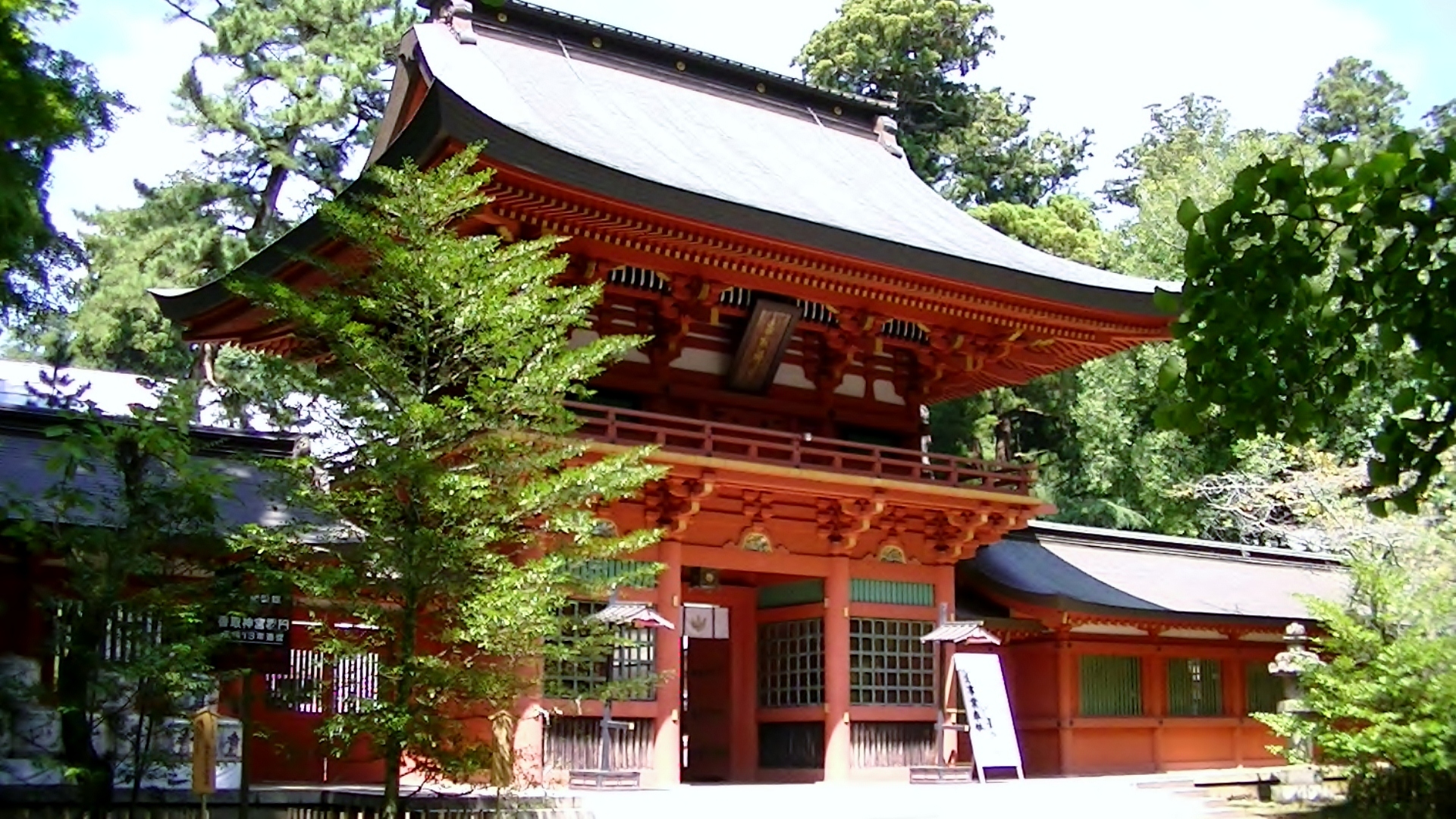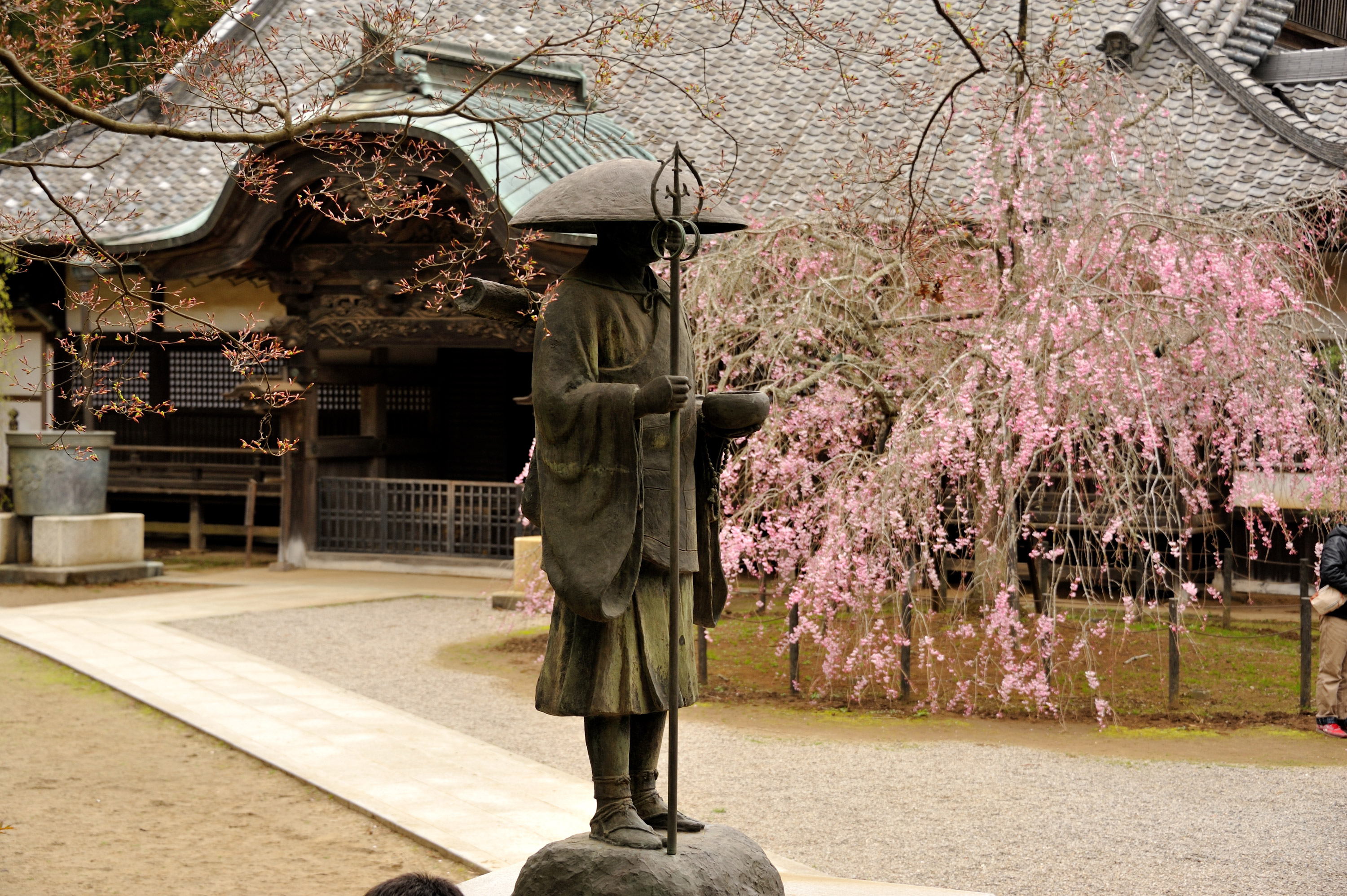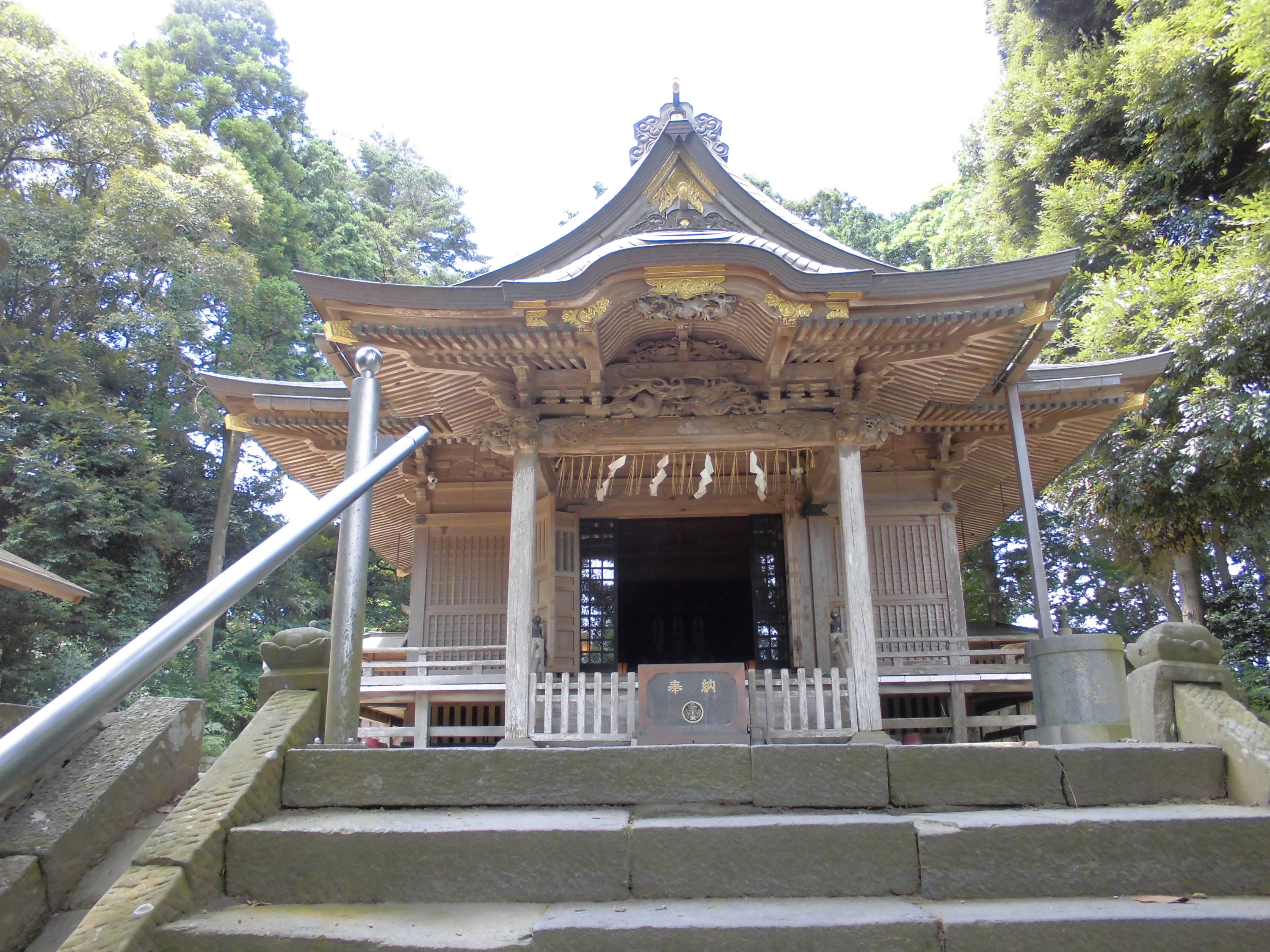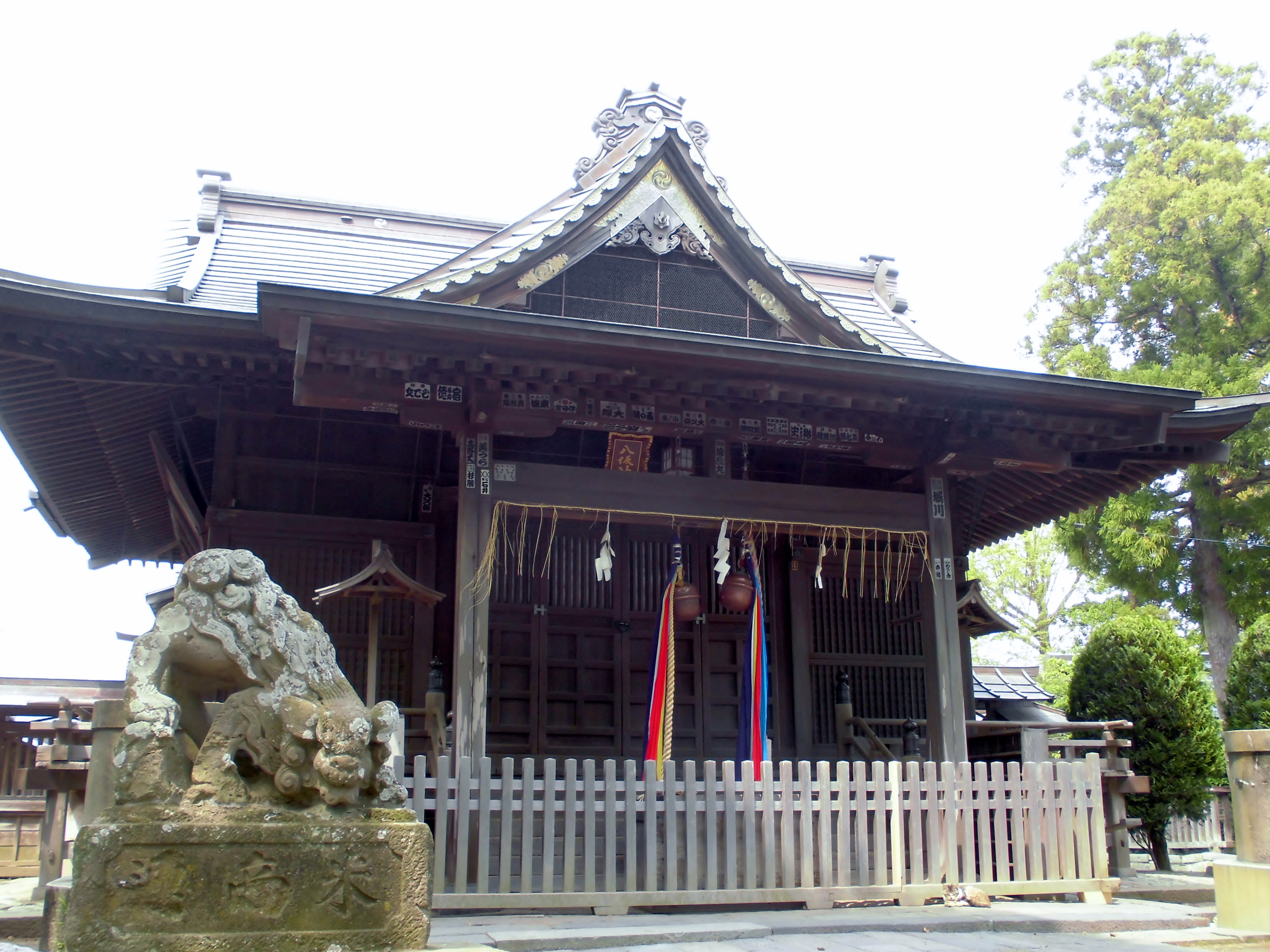


Katori Jingū Shrine is said to have been established in 643 B.C., making it one of the oldest Shinto shrines in Japan, and is the head of 400 Katori Shrines throughout the country. Katori Jingū Shrine enshrines Futsunushi-no-Mikoto, the god of swords who is highly respected as an incredibly powerful god that established and protects Japan. Moreover, before the Meiji period (1868-1912), only three shrines were given Jingū status, a designation for historic Shinto shrines connected to the Imperial House of Japan. Katori Jingū Shrine was one of these three, further illustrating how prestigious this shrine is.
Katori Jingū Shrine’s main building, Torii gate, and prayer hall were constructed in 1700 during the Edo period (1603-1867). The main building’s roof was constructed using hiwada buki (Japanese cypress bark thatching), one of Japan’s original and unrivalled architectural techniques, creating an extremely beautiful roof that contributes to the overall extraordinary elegance of the shrine. Katori Jingū Shrine holds one National Treasure, the Kaijū Budō Kyo (Sea Beast Glazed Mirror). This mirror, decorated with animals and grape vines, is one of the three prominent mirrors of Japan.
In spring, the grounds of Katori Jingū Shrine is covered with cherry blossoms and fresh greenery, while colorful foliage dazzles the eyes of visitors in autumn, attracting crowds of tourists year-round. Buses to and from Katori Jingū Shrine, which is located 4 km (2.5 mi) from JR Sawara Station, are available on weekends and holidays for those who want to visit the shrine.


Kanpuku-ji Temple, located 20 minutes by foot from JR Sawara Station, belongs to the Buzan sect of Shingon Buddhism and is regarded as one of the three great evil-warding daishi temples in Japan, along with Kawasaki Daishi and Nishiarai Daishi. This large temple is said to have been established more than 1,100 years ago and all of the current buildings, excluding the hall that enshrines Bishamon (Bishamondō), were built more than a century ago. Four Important Cultural Properties, including a seated statue of Shakyamuni Tathagata, are stored at this temple. Kanpuku-ji Temple is also the gravesite of Inoh Tadataka (1745-1818), the man who traveled all over Japan on foot to create a map of the country during the Edo period (1603-1867). Additionally, Kanpuku-ji Temple is well known for beautifully representing the four seasons of Japan, with its cherry blossoms in spring, lush greenery in summer, and colorful foliage in autumn.


Suwa Shrine, located west of the Ono River, is an 8-minute walk from JR Sawara Station. Suwa Shrine is said to date back to around 1694, when the local people began developing the land west of the Ono River and started worshipping Takeminakata-no-Mikoto, the god of war, as the region’s protective deity. The current main building of the shrine was built in 1853.
The Sawara Grand Autumn Festival, which is held every October, is organized by Suwa Shrine. During this festival, 14 splendid floats parade the streets. The Sawara Grand Autumn Festival, along with its summer counterpart, the Sawara Grand Summer Festival, organized by Yasaka Shrine, are designated as Important Intangible Folk Cultural Properties by the government.


Following the example of Kyoto’s Yasaka Shrine (formerly called Gion Shrine), Katori’s Yasaka Shrine began as a facility to honor Gozu Tennō, the deity of pestilence believed to cause epidemics, who was both feared and propitiated for protection. However, in 1868, an edict to separate Shinto and Buddhism was issued. As such, facilities sacred to Gozu Tennō were renamed as Yasaka Shrine and Gozu Tennō was replaced by Susanoo-no-Mikoto, the Shinto equivalent of Gozu Tennō.
Every year on the Friday, Saturday, and Sunday immediately following July 10th, Yasaka Shrine holds the Sawara Grand Summer Festival, also known as Gion Festival, during which 10 splendid floats parade the streets. The Sawara Grand Summer Festival, along with its autumn counterpart, the Sawara Grand Autumn Festival, organized by Suwa Shrine, are designated as Important Intangible Folk Cultural Properties by the government. Yasaka Shrine is about a 10 minute walk from JR Sawara Station.
COPYRIGHT SUIGO-SAWARA TOURIST ASSOCIATION ALL RIGHTS RESERVED.
HOME










